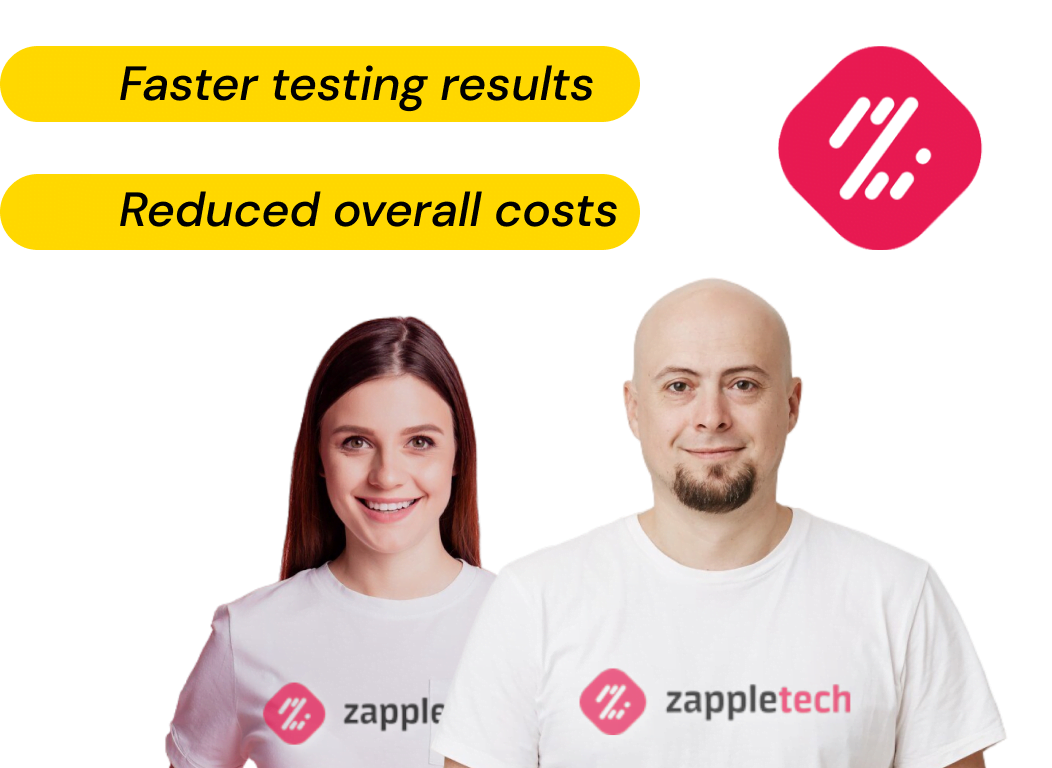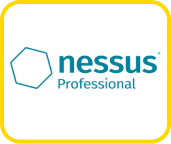Web Test Automation Services


Benefits of Web Test Automation Services
Web Test Automation Services We Offer
What Our Customers Say
What We Test
Industries We Work With
Our Expertise

How We Work
Web App Testing Tools and Technologies





The Way We Solve Challenges
Start Cooperation Now!

Why Should You Choose Web Test Automation Services?
Quality assurance (QA) is a linchpin for ensuring top-notch performance and user experience in software products and services. Yet conventional QA methods face challenges in the dynamic web environment, often proving time-consuming and error-prone.
Automation emerges as a game-changer to address these issues. Automated testing significantly expedites regression and UI testing, ensuring faster feedback loops and higher accuracy. This approach also extends test coverage across diverse web platforms, minimizing the risk of undetected bugs.
By automating routine tasks, QA teams can refocus efforts on strategic initiatives, driving innovation and product enhancement. Automation boosts efficiency and enhances overall product quality and competitiveness in the digital market. Embracing automation solutions revolutionizes QA processes, paving the way for streamlined operations and accelerated growth.
Understanding Web Test Automation
Web test automation services are a cornerstone of modern quality assurance (QA), fundamentally reshaping how testing is conducted in the digital realm. At its core, automation in QA involves leveraging sophisticated tools and frameworks to streamline the testing process, replacing manual execution with programmed scripts that simulate user interactions and system behaviors.
The concept of automation in QA revolves around optimizing testing workflows by automating repetitive tasks and minimizing human intervention. By employing automation, QA teams can achieve higher efficiency, consistency, and scalability in their testing efforts.
One of the primary benefits of automation services is their ability to enhance efficiency significantly. Automated tests can be executed swiftly and repeatedly, allowing for rapid feedback loops and accelerated release cycles. Unlike manual testing, which is prone to human error and can be time-consuming, automation ensures consistent and reliable test results across various scenarios and environments.
Moreover, automation services are crucial in reducing errors and mitigating risks in software development. Automated tests follow predefined scripts, leaving little room for deviations or oversights. This meticulous approach helps identify bugs and defects early in the development lifecycle and ensures thorough validation of critical functionalities and user interactions.
Furthermore, automation enables comprehensive test coverage across different browsers, devices, and operating systems, addressing the challenges posed by the diverse web ecosystem. This broad coverage minimizes the risk of compatibility issues and ensures a seamless user experience across various platforms.
In essence, automation services empower QA teams to achieve higher productivity, accuracy, and reliability levels in their testing endeavors. By embracing automation, organizations can unlock new efficiencies, accelerate time-to-market, and ultimately deliver superior digital experiences to their users.
Advantages
Faster Testing Cycles |
|
Improved Accuracy |
|
Enhanced Test Coverage |
|
Scalability |
|
Resource Optimization |
|
In summary, the benefits of web test automation services extend far beyond just faster testing cycles and improved accuracy. By enhancing test coverage, scalability, and resource optimization, automation empowers QA teams to deliver high-quality software efficiently and effectively in today’s dynamic digital landscape.
Implementation
Implementing web test automation involves careful planning, execution, and integration into existing QA frameworks. Here are some key insights into the implementation process:
- Assess Current QA Processes: Before implementing automation, it’s essential to assess existing QA processes to identify areas where automation can bring the most value. This includes understanding the types of tests being performed, the frequency of testing, and the resources involved.
- Select Suitable Automation Tools: Choose automation tools and frameworks that align with your web applications’ specific requirements and technologies. Consider factors like ease of use, scalability, compatibility with existing systems, and community support.
- Develop a Test Automation Strategy: Define a clear strategy outlining which tests will be automated, prioritizing critical test scenarios and functionalities. Establish guidelines for creating reusable test scripts, maintaining test suites, and managing test data.
- Create Test Automation Scripts: Develop test scripts to automate various test scenarios, including functional testing, regression testing, performance testing, and compatibility testing. Ensure that test scripts are robust, maintainable, and provide comprehensive test coverage.
- Integrate Automation into CI/CD Pipelines: Integrate automation into continuous integration and continuous deployment (CI/CD) pipelines to enable automated testing as part of the software development lifecycle. Automate the execution of tests triggered by code commits, builds, and deployments.
- Implement Test Data Management: Set up mechanisms for managing test data effectively, ensuring the availability of relevant data for automated tests. This may involve creating test data repositories, generating synthetic test data, or leveraging data masking techniques to protect sensitive information.
- Establish Reporting and Monitoring Mechanisms: Implement reporting and monitoring mechanisms to track the execution of automated tests, monitor test results, and analyze test coverage. Use dashboards and analytics tools to gain insights into testing efficiency and identify areas for improvement.
Overcoming Challenges
Adopting web test automation services comes with its challenges, but with careful planning and implementation, these obstacles can be effectively addressed. Here are some common challenges in adopting automation and potential solutions:
Resistance to Change
- Challenge: Resistance from stakeholders or team members accustomed to manual testing methods may hinder the adoption of automation.
- Solution: Foster a culture of collaboration and communication, emphasizing the benefits of automation in improving efficiency, reducing errors, and empowering teams to focus on higher-value tasks. Provide training and support to help team members transition to automated testing smoothly.
Tool Selection and Integration
- Challenge: Choosing the right automation tools and integrating them into existing QA frameworks can be daunting, especially considering the wide range of options available.
- Solution: Conduct thorough research to evaluate automation tools based on compatibility with web technologies, ease of use, scalability, and community support. Pilot multiple tools to assess their suitability for the organization’s specific needs before making a final decision. Work closely with development and IT teams to ensure seamless integration of automation tools into existing workflows.
Maintenance of Test Scripts
- Challenge: Test scripts require ongoing maintenance to adapt to changes in the application under test, such as updates to UI elements or functionalities.
- Solution: Establish robust practices for script maintenance, including version control, documentation, and regular reviews. Implement object abstraction and parameterization techniques to make scripts more resilient to changes. Leverage automation frameworks that support modularization and reusability to minimize the effort required for script maintenance.
Test Data Management
- Challenge: Managing test data effectively, including creating and maintaining test datasets, can be complex and time-consuming.
- Solution: Implement strategies for test data management, such as creating reusable test data sets, using data-driven testing techniques, and leveraging data generation tools. Establish guidelines for managing sensitive or confidential data in automated tests, ensuring compliance with privacy regulations and security standards.
Environment Configuration and Stability
- Challenge: Ensuring the stability and consistency of test environments across different platforms and configurations can be challenging.
- Solution: Use infrastructure-as-code (IaC) principles to automate the provisioning and configuration of test environments, ensuring consistency and reproducibility. Implement techniques such as containerization or virtualization to isolate test environments and minimize dependencies on external factors. Monitor and maintain the health of test environments proactively to prevent disruptions to testing activities.
By proactively addressing these challenges and implementing effective solutions, organizations can successfully overcome barriers to adopting web test automation services and reap the benefits of streamlined QA processes and improved software quality.
Future Trends and Innovations
As technology continues to evolve rapidly, the landscape of web test automation is also undergoing significant transformations. Exploring emerging trends and innovations in web test automation technology provides valuable insights into the future of QA processes and their implications:
Artificial Intelligence and Machine Learning
- Emerging Trend: Artificial intelligence (AI) and machine learning (ML) are revolutionizing web test automation by enabling intelligent test generation, predictive analytics, and autonomous testing capabilities.
- Implications: AI-powered testing tools can analyze vast amounts of data, identify patterns, and predict potential issues, improving the efficiency and accuracy of testing processes. ML algorithms can also dynamically adapt and optimize test scripts based on real-time feedback, enhancing test coverage and effectiveness.
Shift-left Testing and DevOps Integration
- Emerging Trend: Shift-left testing, emphasizing early testing in the software development lifecycle, and integration with DevOps practices are becoming increasingly prevalent in web test automation.
- Implications: By incorporating testing activities earlier in the development process, organizations can proactively detect and address defects, reducing the cost and effort of resolving issues later. Integration with DevOps pipelines enables seamless testing automation within CI/CD workflows, facilitating faster delivery of high-quality software.
Cross-Browser and Cross-Device Testing
- Emerging Trend: With the proliferation of web applications across diverse browsers, devices, and platforms, there is a growing need for automated cross-browser and cross-device testing solutions.
- Implications: Automation tools that support testing across multiple browsers, devices, and operating systems enable organizations to ensure consistent user experiences and compatibility across various environments. This trend reflects the importance of comprehensive test coverage in today’s multi-platform digital ecosystem.
Codeless Test Automation
- Emerging Trend: Codeless test automation platforms are gaining popularity. These platforms allow testers to create and execute automated tests without writing code.
- Implications: Codeless automation tools democratize test automation by empowering non-technical users like business analysts and domain experts to contribute to testing efforts. This trend promotes collaboration between technical and non-technical team members and accelerates the adoption of automation across the organization.
Shift to Cloud-Based Testing Solutions
- Emerging Trend: Cloud-based testing solutions are becoming increasingly prevalent, offering scalability, flexibility, and cost-effectiveness for web test automation.
- Implications: Cloud-based automation platforms provide on-demand access to testing infrastructure, enabling organizations to scale resources dynamically based on testing requirements. This trend facilitates distributed testing, collaboration, and accessibility, particularly in remote or geographically dispersed teams.
Encouraging ongoing learning and adaptation is crucial to staying ahead in the rapidly evolving landscape of software testing. QA professionals should continuously update their skills, explore new technologies, and embrace emerging trends to remain competitive and drive innovation in their organizations. By staying abreast of future trends and innovations in web test automation, QA teams can leverage new opportunities to enhance efficiency, quality, and agility in their testing practices.
In conclusion, adopting web test services for automation represents a transformative opportunity for organizations seeking to revolutionize their quality assurance (QA) processes. Throughout this discussion, we’ve explored the numerous benefits and implications of embracing automation in QA, highlighting its potential to drive efficiency, improve accuracy, and enhance overall software quality.
By automating repetitive tasks, accelerating testing cycles, and expanding test coverage across diverse web environments, web test services offer tangible advantages for QA teams. Faster feedback loops, reduced errors, and enhanced scalability enable organizations to deliver high-quality software products more rapidly and reliably.
Moreover, automation empowers QA professionals to focus on strategic initiatives, such as exploratory testing, test planning, and analysis, thereby maximizing productivity and contributing more value to the software development lifecycle. Automation into continuous integration and deployment (CI/CD) pipelines facilitates seamless testing within agile development workflows. This enables organizations to achieve faster time-to-market and maintain a competitive edge in the digital landscape.
As we look to the future, the evolution of web test automation technology presents exciting opportunities for innovation and advancement. From artificial intelligence and machine learning to codeless test automation and cloud-based solutions, emerging trends promise to streamline QA processes further and elevate automation’s role in driving software quality.
In light of these developments, organizations must embrace test automation services as a strategic imperative for achieving excellence in QA. Organizations can position themselves for success in the rapidly evolving software testing landscape by fostering a culture of learning, adaptation, and continuous improvement.
In conclusion, the benefits of web test automation services are clear: increased efficiency, improved accuracy, and enhanced agility. As we navigate the complexities of modern software development, embracing automation is not just a choice—it’s necessary for organizations committed to delivering superior digital experiences and staying ahead in today’s dynamic market. Embrace automation, revolutionize your QA processes, and unlock new levels of innovation and success.
Frequently Asked Questions:
How often should web test automation be run?
Typically, automation is written before development begins and is upgraded as the digital product is developed. Basic scripts or sets of scripts are created, running in parallel or one at a time. This allows all code and third-party integrations to be fully covered by tests.
Test scripts are almost always deployed at the start of the next sprint and modified in between. During this time, we make adjustments to the code and improve the verification algorithm. When ready, the script is launched.
In the case of regression testing, automated scripts almost 24/7 scan the code in search of errors that occurred after changes were made to software components. That’s why automation, though a difficult but important element of testing, should be run as often as possible to ensure a reliable test result.
Why do we need web test automation?
Test automation is usually provided as part of the development process or as a separate service by most web development businesses. The major goals of automated testing are to improve software quality, make the development process more agile, and eliminate potential risks.
Is automation better than manual?
In the classical sense, yes, automation is better than manual testing. But it is worth understanding that both methods are components of a set of operations necessary for the most detailed study of the software being developed.
Test automation helps you cope with many single-type tasks without involving additional specialists. All you need is one QA Engineer who scripts the testing of all the features and components of an application.
It can also parallelize tests between virtual machines or cloud test environments. This is necessary when a digital solution under development is intended to be used on multiple platforms. In this way, software versions for different browsers, operating systems, or mobile systems can be tested simultaneously.
When is it appropriate to use web test automation instead of manual?
Almost always, except for random or one-time tests. Test automation allows you to speed up all processes, optimize your routine and do more work with less staff in a shorter time.
Automation is especially relevant when you need to test different software versions in parallel, regression checks, and cyclic with random values. All these processes are quite expensive in terms of resources. Therefore it is better to delegate their execution to algorithms of working tools such as Selenium, Ranorex, TestCafe, or other utilities, frameworks, and complexes.
At Zapple Tech, we try to ensure 100% task coverage with automated tests by creating universal scenarios and repeatable code.
How much cost automation testing services?
As a rule, the cost of testing is calculated individually for each project. If you take the median value, on average, this process is priced between $5,000 and $50,000.
The price is influenced by the following factors:
- complexity and scale of a project;
- functionality;
- team size;
- type of cooperation;
- technologies;
- project timeline;
- specializations and skill levels of performers.
In fact, it is automation that does not increase the price of the project because, usually, the whole set of services is considered. We at Zapple Tech use all possible methods to improve the quality of QA without evaluating every single component or performance model. In addition, we think that only 100% automation can provide the proper level of code cleanliness and the best UX.
What is the command for web test automation?
Usually, the team is matched to the project. That’s why the composition may vary. For a large and voluminous application, you need more than 15 specialists, for a medium and small one, a team of 3-5 experts is enough.
The typical composition: Team Lead, Project Manager, QA Engineer, and 2-3 QA Testers.
Since we work according to Agile, DevOps, and TestDevOps methodologies, we can fully control the process and synchronize progress with other development participants. This is possible thanks to the continuous delivery of CI/CD using Jenkins or other similar tools.
Close cooperation and a small experienced team allow to concentrate and assign tasks to individual experts, minimizing the risk of missing bugs.
How will automation testing help my project?
In order to release a trending solution and use it to win popularity among the target audience, you need to reach the market on time. To do this, you can take two paths: abandon software testing, concentrate on development, or use automation of all QA processes. And the second option is preferable for businesses because it decreases the chance of errors after release, even when it seems that the digital solution works perfectly.
Automation speeds up the QA process at least 2 times faster than manual testing. It also affects the release date, reducing it. Accordingly, if you automate testing, you will get a working app without bugs in time, and you will be able to offer it to your customers before your competitors.
What are types of web application testing?
- Functionality Testing
- Web Usability Testing
- Interface Testing
- Website Compatibility Testing
- Performance Testing
- Web Accessibility Testing
- Security Testing
What tools are the most popular for web testing?
- WebLOAD
- Acunetix.
- Netsparker
- Test IQ
- Experitest
- Lambda Test
- Selenium
- Watir
How does automation testing affect the speed of the release of an IT solution?
The sooner you fully test a digital solution and eliminate all bugs in it, the sooner an IT product will hit the market. Automation allows you to speed up the QA process by at least 10 times by scripting routine operations and performing them autonomously. Moreover, this type of testing combines perfectly with the CI/CD method providing full synchronization of the development progress with error detection and correction.
All this combined reduces not only the development time but also the overall release time of a digital product. Due to the close integration of all processes in Agile, DevOps, and TestDevOps methodologies, it is possible to guarantee that the IT solution will be implemented on time and the number of bugs in the final version will be minimized or leveled out altogether.
What are the challenges in web application testing?
- Integration
- Interoperability
- Security
- Performance
- Usability
- Quality Testing, Exceptional Services
What is web test automation?
This is a whole set of operations aimed at accelerating the testing process and improving its results. This procedure is performed by experienced QA experts using up-to-date tools, algorithms, and techniques. Development languages are used to create test scenarios, and the code itself is written from scratch for each individual task.
All script fragments are reused for regression testing. This accelerates the entire bug-finding process from the early stages of development to the final release of the IT product. Both classic and codeless tools, utilities, and frameworks are used in work, capable of providing almost 100% coverage of the main testing tasks. It is also practiced to implement advanced technologies such as AI, ML, and RPA to improve the relevance of results.
Why is automation testing so important?
Full automation helps QA masters investigate the web application under development faster and more thoroughly. If you manually test all features, integrations, interfaces, and software code, you will face staff shortages, poor work organization, and delays. This is particularly detrimental to release dates as well as the quality of the digital product.
Automation is done by developing scripts – mini-programs that follow a given algorithm, cyclically performing a series of actions with one or more parameters. This reduces the amount of routine in the QA process and details the bug search results. Some tools can also generate their own test report in a human-readable format, which speeds up the testing and bug decoding even more.
Can you run full coverage web test automation?
Yes, we can achieve almost 100% coverage of all functions by automating web application testing. You have to understand that some checks are faster and easier to perform manually by one specialist than to write code for this process. But everything that can be automated should be automated. This is an axiom.
If we consider automation by type of testing, we can script everything here: smoke, end-to-end, regression, interface, API, unit, functional, load, user, and security. All of these tests can and should be automated to maximize test coverage and speed up the entire QA process while getting relevant and valid results.
If a one-time or quick test of a certain parameter (usually used in spot testing) is required, it is easier to assign a single tester and search for errors manually.








